
4.3 Material and Substance
Designers must make granular choices about the materials, the substance, the surfaces, the structures, and the moving parts that are unique to each object they work on. While we mainly focus on the tactile qualities of materials and surfaces in this section, we recognize that materials affect other sensory experiences too. As an example of tactile aesthetics, we illustrate the skateboard image below to identify some qualities that contribute to tactile experiences: the elastic material that stretches a bit when flexed (substance), the textured surface used for grip (material), and the structure that provides a sense of balance and supports dynamic movement.
Tactile aesthetics include substance, surface sensations, structure, and moving parts
Since there are many different kinds of materials, it is best to select those with the most suitable characteristics for each product. Look at the material swatches below and try to describe their tactile features in comparison to one another. For example, does fabric have a similar temperature flow as glass? Do the same size pieces of wood and glass have similar weights?
Activity Time!
Drag each set of descriptors to the type of material that you think they best correspond to based on the material’s temperature flow and surface quality.
Each of these materials has different tactile qualities
Karana, Hekkert and Kandachar (2009) developed a sensorial scale for differentiating among material qualities. Their scale is arranged in pairs of semantic differentials (opposites) and we list those related to tactile surfaces here: hard-soft, smooth-rough, cold-warm, not elastic-elastic, tough-ductile, strong-weak, and light-heavy. These are the kinds of tactile perceptions of substances that we may be exposed to as designers and as users. To those terms, we can add sticky-slippery, bumpy-flat, and thin-thick. Can you think of any textures or patterns to add to our descriptive list of surface qualities?
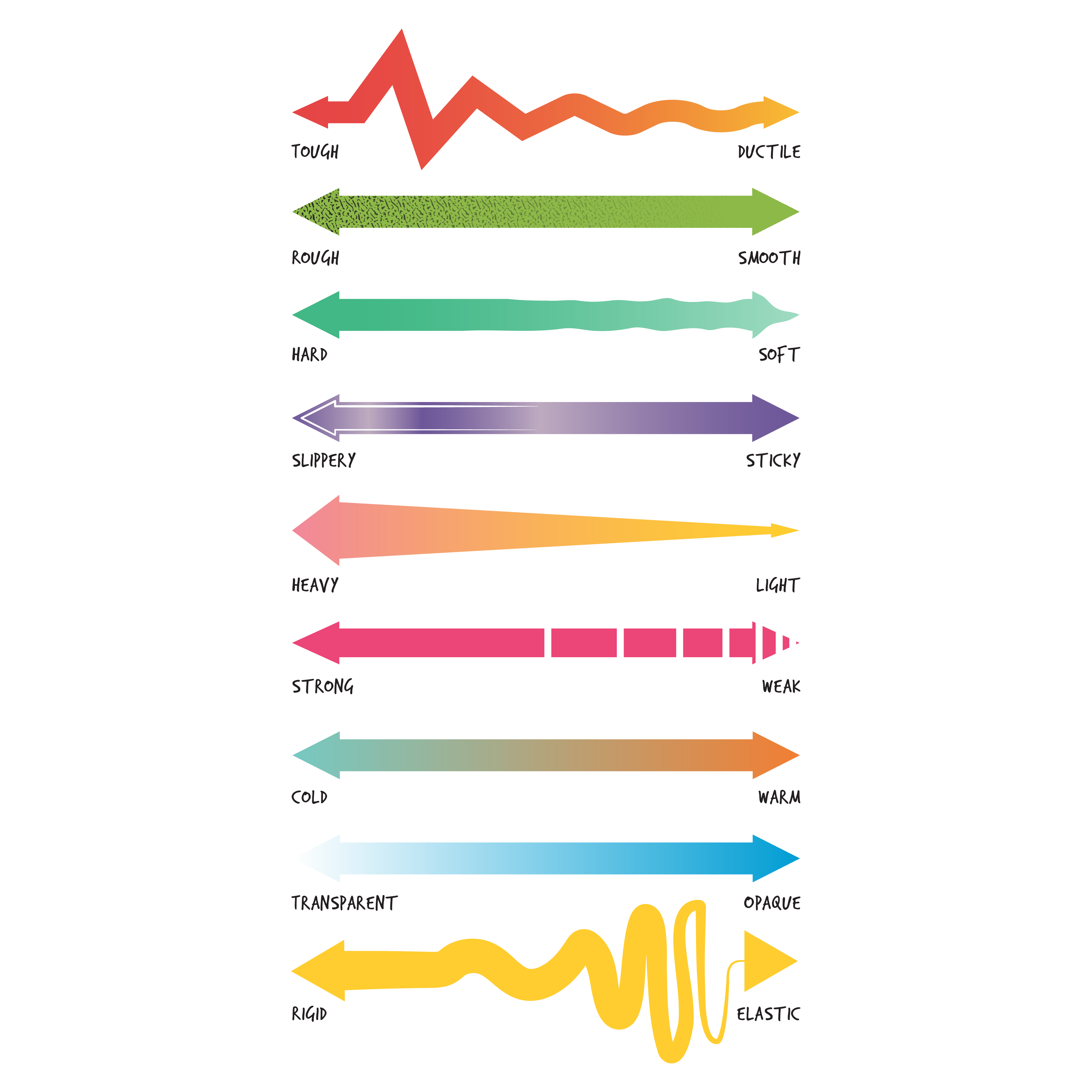
Sensorial Properties used for attributing meanings to materials
The substance of an object can be described by what it feels like when a person manipulates it. Is it hard or soft, elastic or plastic, hot or cold, heavy or light? Schifferstein and Wastiel (2013) point out that these perceptions depend on the different material choices designers make.
Let’s consider an object that could be hard or soft, or both. Have you ever tried to use a squeeze ball to strengthen your grip? As you exert pressure by squeezing the ball, the rubber material resists your efforts as you transform its shape by squeezing, pulling, pushing, or bending it. Ultimately this builds strength in your hand.
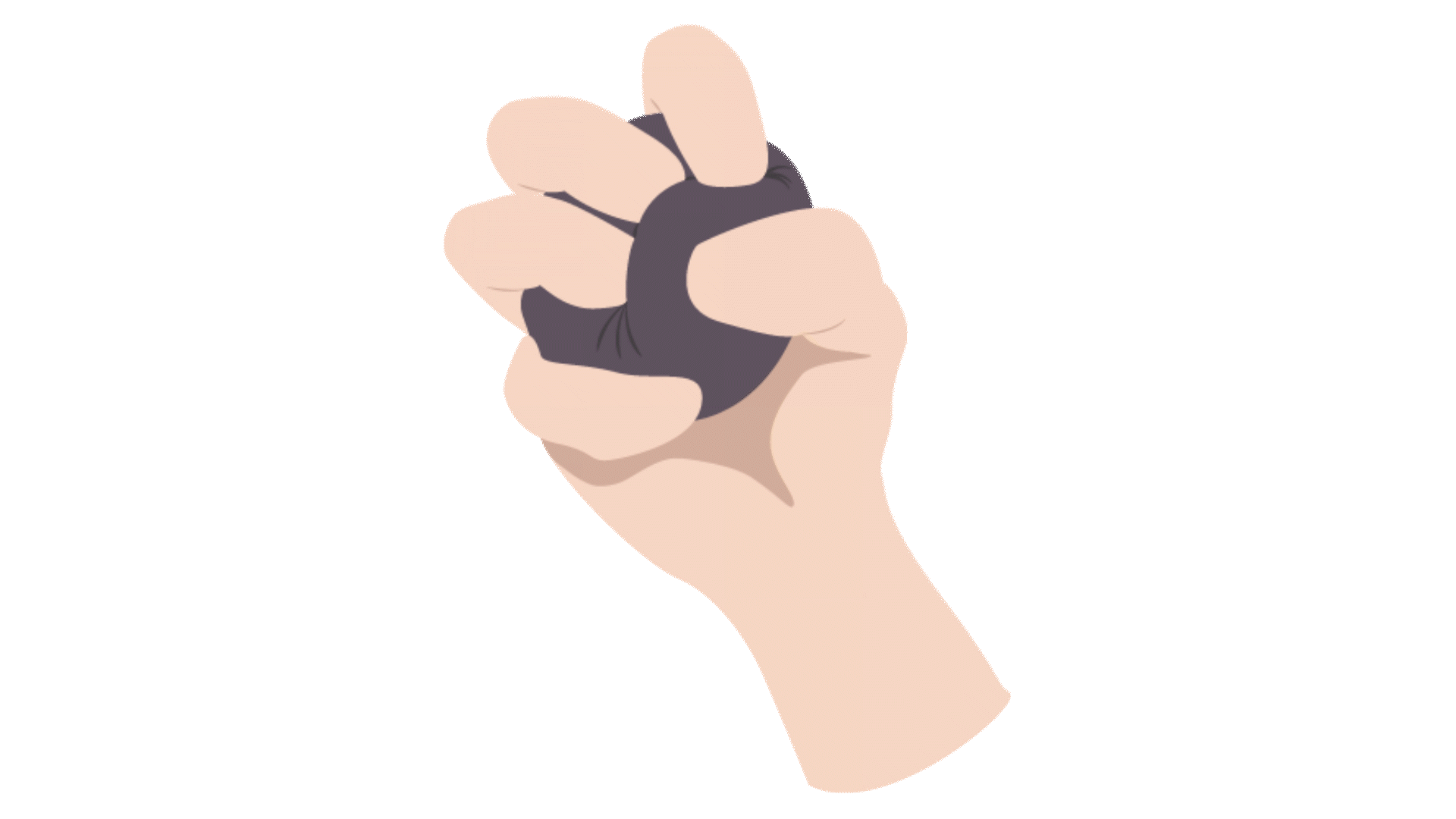
Exerting pressure on the ball reveals its substance and material resistance qualities
When you exert pressure on an object you are exploring its hardness or softness; when you bend or twist it, you are exploring its stiffness and flexibility. Can you think of objects you use every day that need a certain hardness to do the job – what about a pencil sharpener, a cooking preparation knife, or a hammer? Each of these objects are hard enough to resist the pressure you apply on it to get the task done – sharpening your pencil, dicing an onion, or hammering a nail into the wall.
Imagine if those same objects were elastic or plastic. Elasticity occurs when you stretch an object and it returns to its original shape after it has been transformed. Plasticity occurs when the object remains in its newly transformed shape. What would a pencil sharpener with elastic properties feel like when you are trying to sharpen your pencil? It might be difficult to hold and get the job done. On the other hand, a baby bottle top that compresses when squeezed by a suckling baby would feel perfectly natural and its elasticity would be a welcome affordance for feeding! Most of us have experienced plasticity as young children when making things out of playdoh – once we built that car, sailboat, or character, the only way it would return to its original shape was by squishing it – that’s plasticity for you.
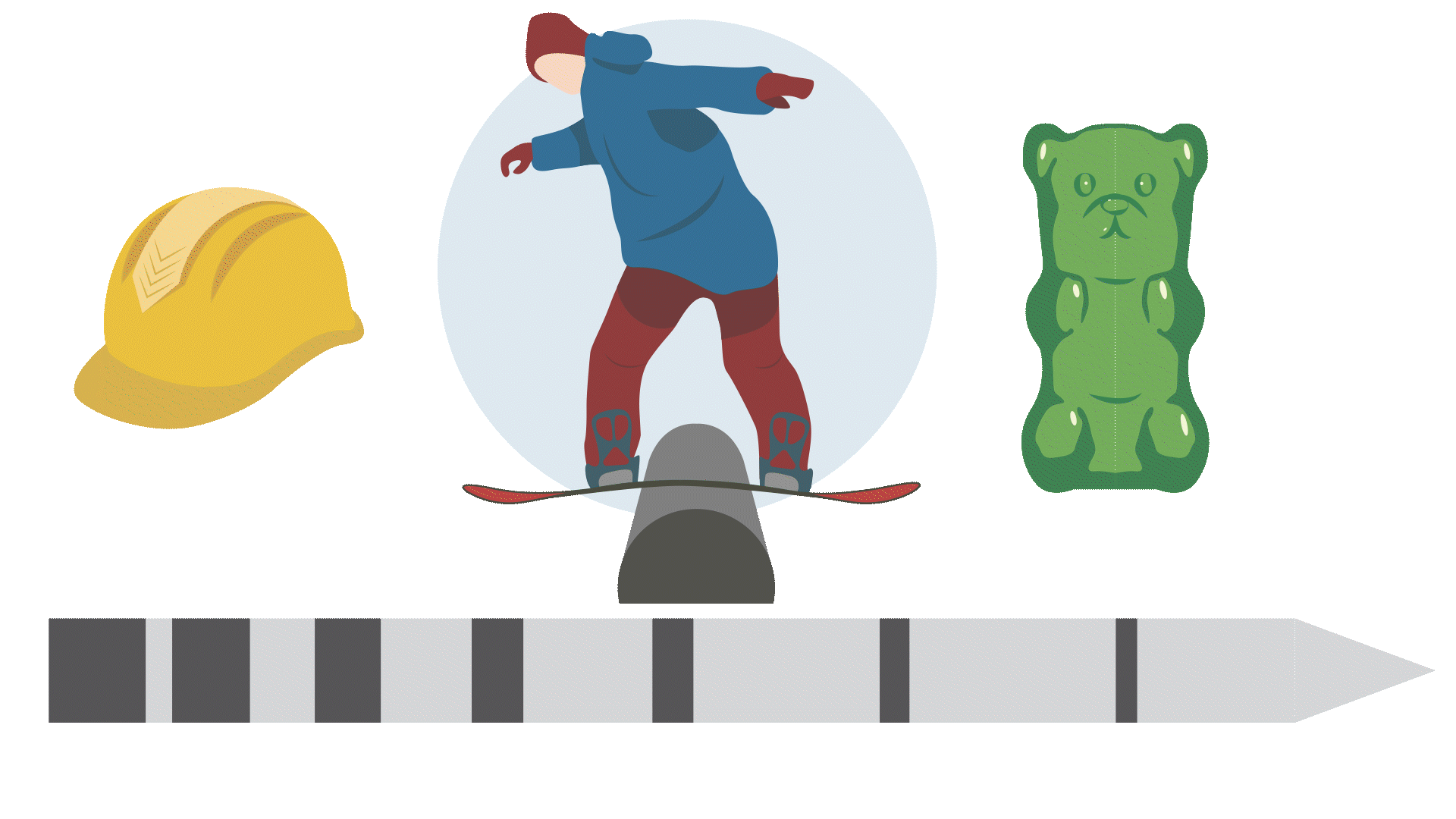
Degrees of elasticity
We discussed temperature earlier; how do you react to an object that is very hot or very cold? The only way to know is to actively touch something or to have it passively touch you. You will likely sense that the metal handles on your pot of boiling spaghetti as hot if you aren’t wearing oven mitts.
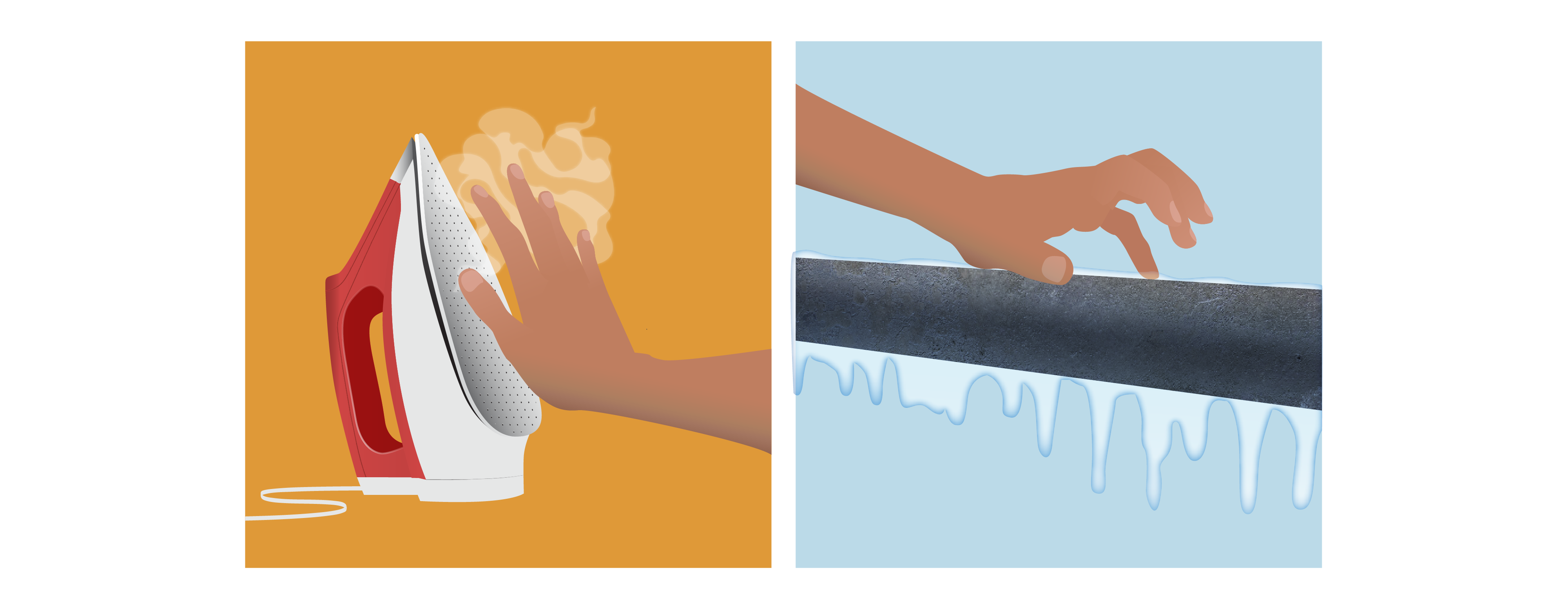
We react to tactile temperature sensations: extreme heat and extreme cold
Let’s say you accidentally touch that iron, the high-temperature flow between it and your skin makes you feel a hot or burning sensation at the point of contact. And if you are about to grab that ice-cold handrail it will feel cold at the point of contact because it is drawing heat from your skin. In both cases, materials like metal and glass have low-temperature resistance because the temperature flows quickly between your skin and the surface you are touching. Materials with high-temperature resistance, like wood and plastic, feel warm or neutral because they do not draw away heat or cold and “generally feel warm even if their temperature is below body temperature” (Sonnefeld & Schifferstein: 2009).
Temperature flow refers to this transfer of warmth or coolness between your skin and the object it is holding. In some cases, it may be wonderful to experience temperature flow. For example, on a cold day, you may experience temperature flow when holding a hot ceramic cup of coffee that warms your hands.
Temperature flow in different materials
Another key property of the substance of any object is its weight – heavy or light? Having just carried 25 boxes of books down three flights of stairs, carrying the heavy boxes was definitely more of a challenge than the light ones! Although sometimes heaviness can be an important property, a heavy table can be perceived as sturdy. We often make decisions about which products to buy, or use, based on their weight. For example, a lightweight folding stool seems easier to carry in a backpack than a heavy one.
Balance is another factor related to weight – would you prefer to sit on a chair with a narrow central post on a wide foot or a conical post as shown in the images below? Which one is likely to feel more balanced when sitting on an uneven surface? Our perception of balance depends on weight distribution, which may change due to external factors.
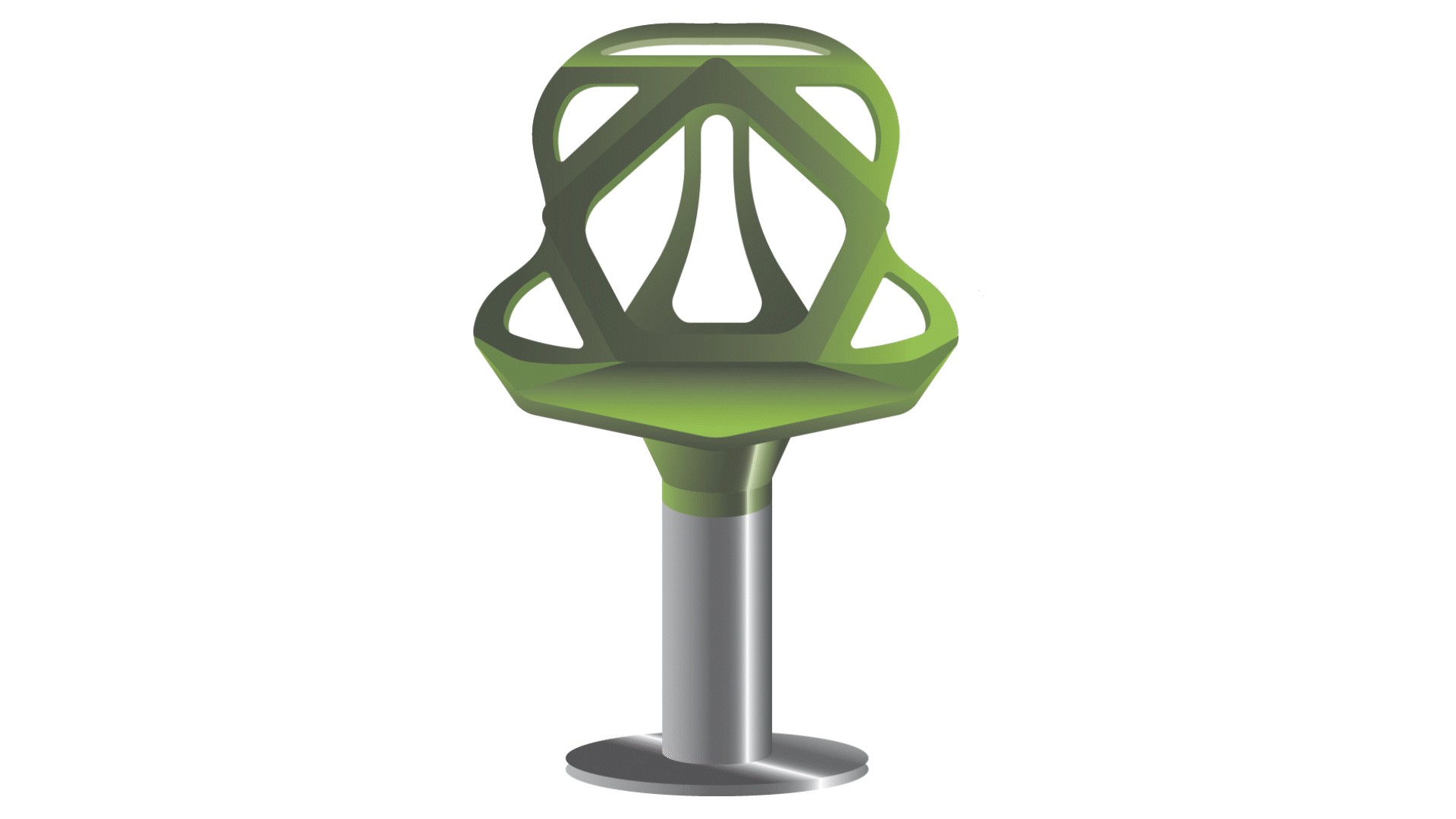
Structural weight distribution contributes to a sense of balance
If the weight distribution of a product changes, its stability changes too and it can become unbalanced. This may be due to fluctuating internal or external influences. For example, high-end cameras used for videography can be difficult to hold steady while filming, resulting in shaky videos. Attaching a stabilizer to the camera counters the movements of the person holding the camera. This allows the filmmaker to move freely while the camera’s orientation of axes remains the same at all times.
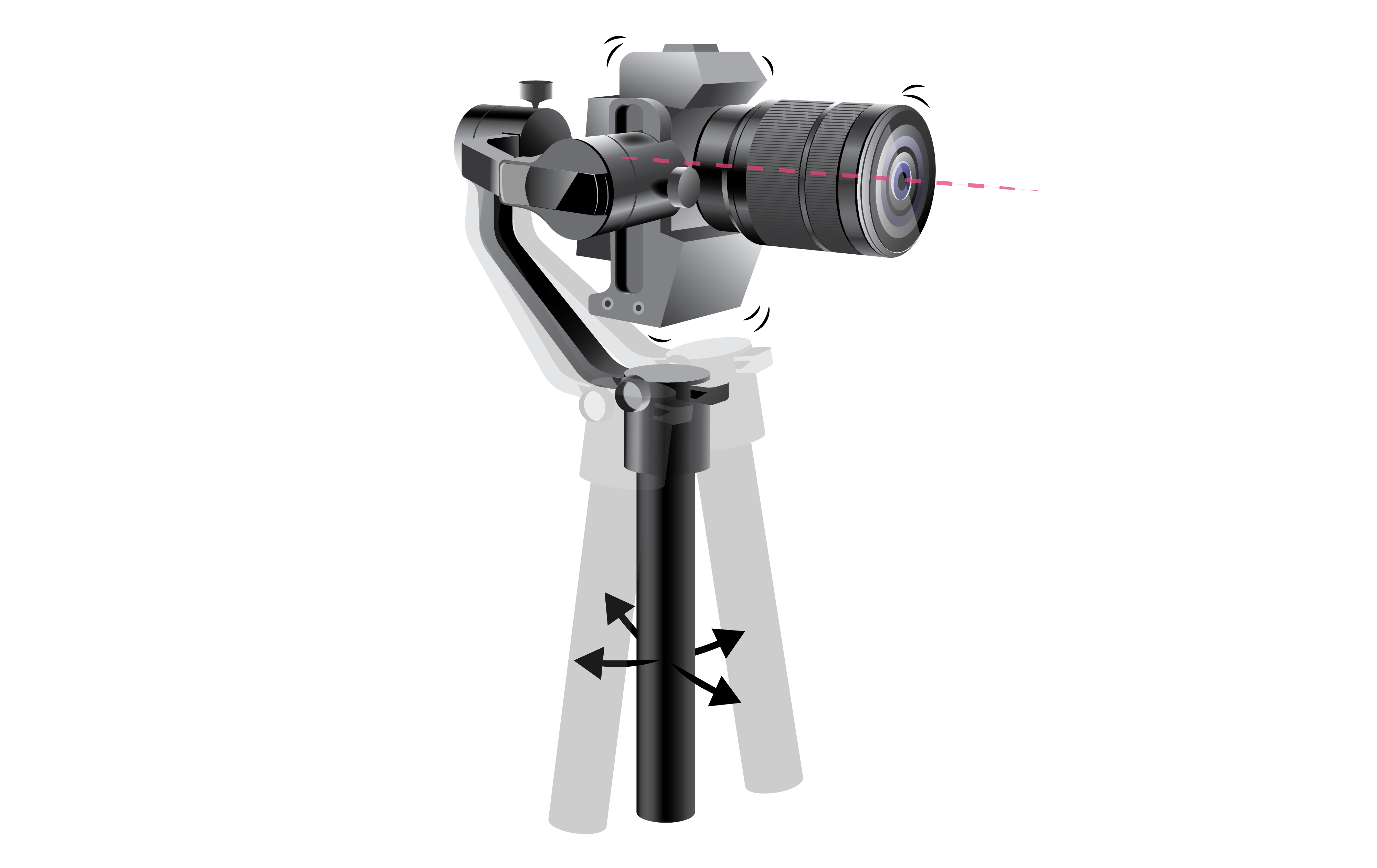
A stabilizer improves the tactile experience of capturing videos and contributes to a more pleasant visual outcome
In addition, the weight distribution of objects affects how they are set up and maintained. In the images below you can see two products that would tip over if not stabilized in an upright position. Imagine what kind of tactile interactions you would have with the lamp below if it didn’t have a counterweight to balance it. The same is true when setting up and maintaining a buoy on the river.

Balancing weight distribution is an important factor when interacting with products
Next section: 4.4 Surfaces and Structures

